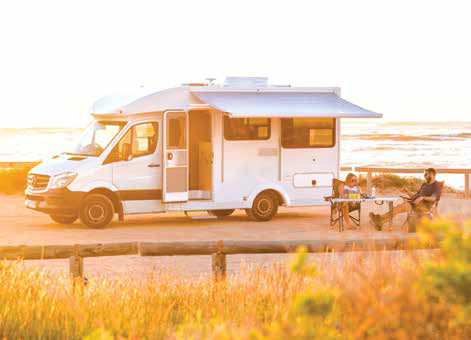
Licencing for RVs can be a little confusing at times and is perhaps one of the biggest barriers to taking up the RVing life. Whilst caravans are fairly straight forward, only needing a regular car or Class C driver’s licence (though being on a Provisional licence can affect this), some motorhomes may need something more.
It is, of course, highly important to have the right licence for the vehicle being driven (not only to avoid fines, but so you know what to do to ensure the safety of everyone on the road), and in actual fact, the licencing system is not nearly as complicated as it looks, coming down purely to vehicle sizing.
HEAVY VEHICLES
A heavy vehicle is one that weighs more than 4.5 tonnes, and all Australian states require drivers to have a special licence to be able to drive them. Each state and territory road authorities administer training, tests and licencing according to the National Heavy Vehicle Regulator (NHVR), which separates heavy vehicles into easy to understand categories. They are:
Light Rigid (LR) — Small trucks or motorhomes that have a Gross Vehicle Mass (GVM) between 4.5 and 8 tonnes. Any trailer towed by a vehicle in this category must have a GVM under 9 tonnes.
Medium Rigid (MR) — A vehicle with two axles and a GVM over 8 tonnes. Once again, any trailer being towed must have a GVM under 9 tonnes.
Heavy Rigid (HR) — Trucks and buses with a GVM over 8 tonnes and three or more axles fall into this category. Any trailer being towed must have a GVM under 9 tonnes, and articulated buses with three or more axles is also classified as an HR vehicle.
Heavy Combination and Multi-
Combination — This category covers trucks ranging from articulated with more than three axles to B-doubles and roadtrains.
Generally speaking, campervans will only need a regular driver’s licence, and the GVM of some motorhomes can see them needing a LR or even MR licence.

HOW TO GET A LR OR MR LICENCE
The actual test will likely vary state to state and territory to territory, but you will need to have had a full driver’s licence for at least a year. From there the process usually entails a written test to ensure you have the knowledge of road rules and how they apply to the heavy vehicles you will be driving. Then you’ll have to pass a physical driving test.
Although it is straight forward, making it even easier (and much less stressful) are various certified courses on offer throughout the country. Generally lasting one to two days, the courses cover instruction for the theory and road rules needed, as well as practical experience and components. Often times, they can actually cover the tests themselves.
Before you know it, you’ll be hitting the road to far-flung destinations, safe in the knowledge you’ve got the right licence for the job.

rvSafe is a campaign designed to increase road safety awareness and education specific to the RV industry. The project is funded through the Federal Government’s Road Safety Awareness and Enablers Fund and proudly supported by the Campervan and Motorhome Club of Australia. Find out more at rvsafe.com.au.

Category: Features
Written: Tue 01 Dec 2020
Printed: December, 2020
Published By: